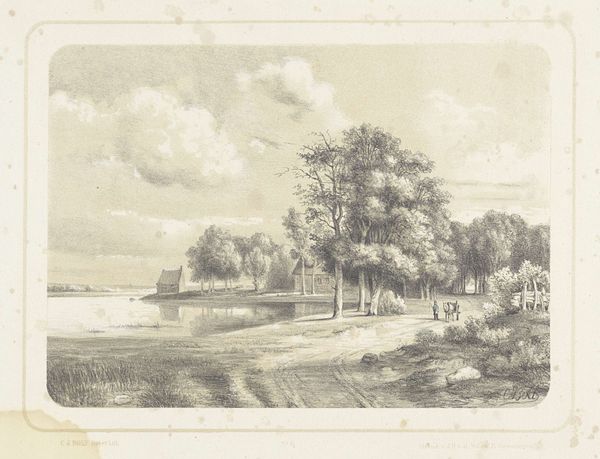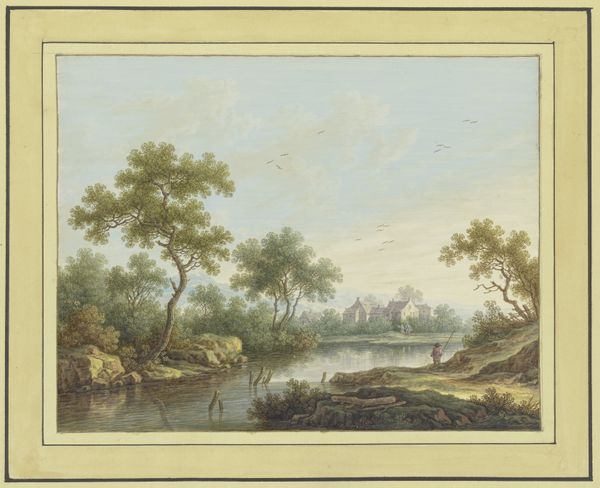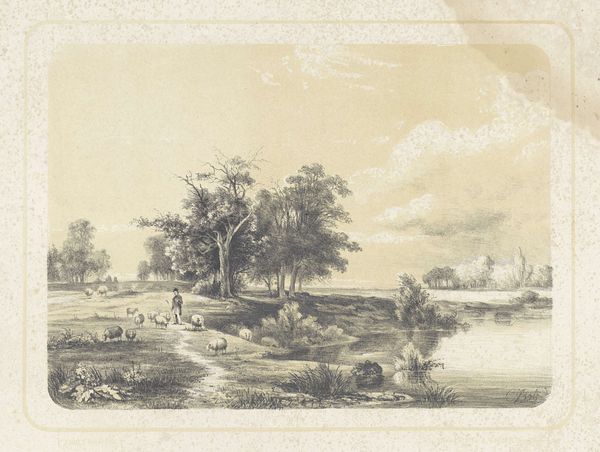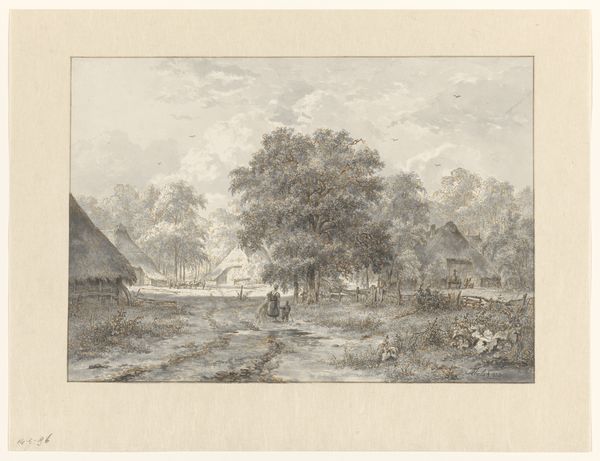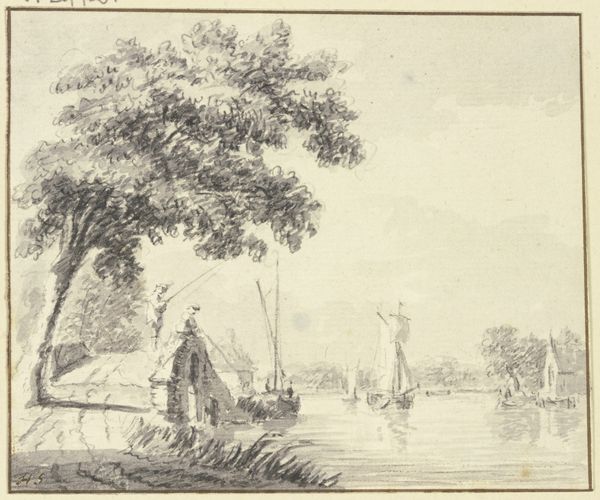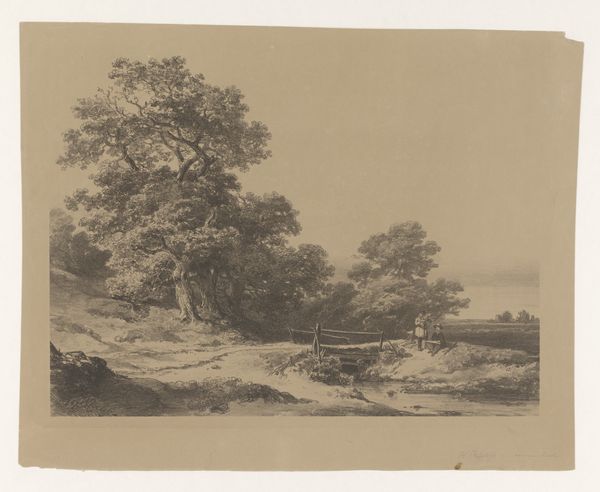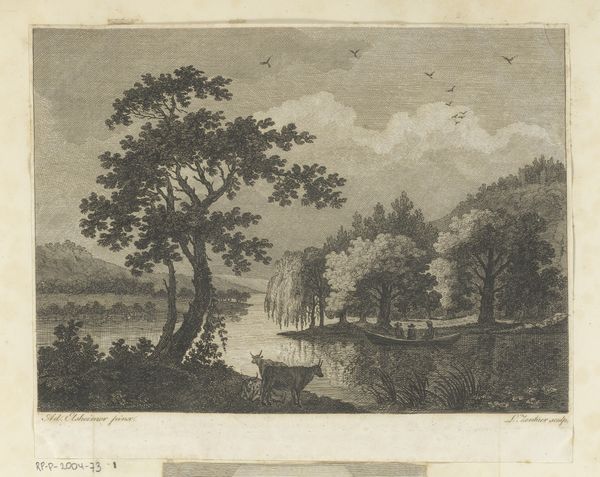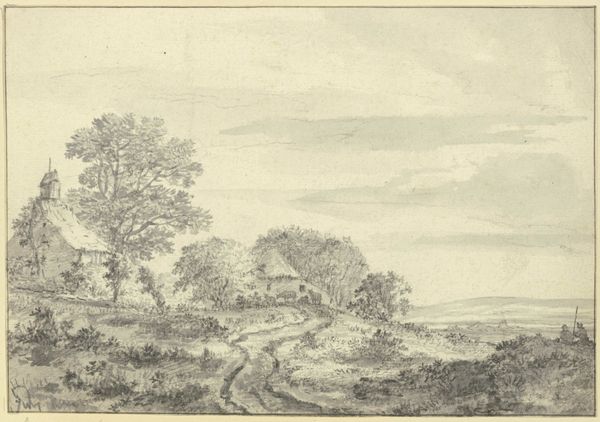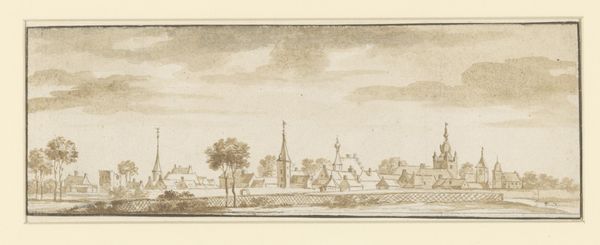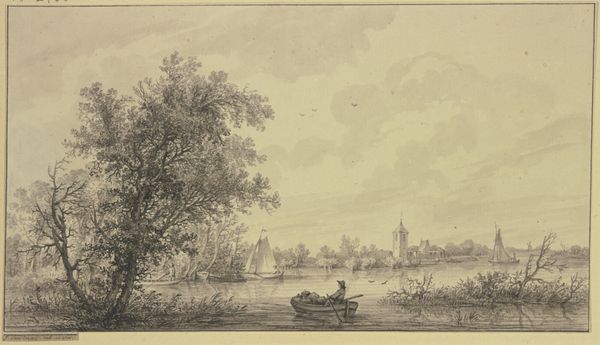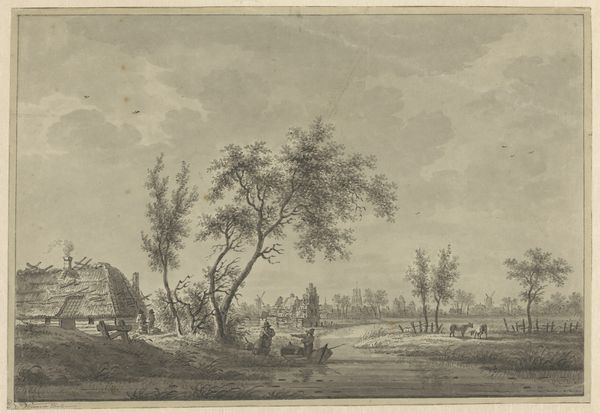
Dimensions: 3 7/8 x 5 9/16 in. (9.8 x 14.1 cm)
Copyright: Public Domain
Curator: This watercolor painting, likely executed sometime in the 18th century, is titled "Cottage with a Distant Village." It is currently held here at the Metropolitan Museum of Art. Editor: It's a rather tranquil scene. The colors are muted, and there is an overall sense of serenity and even of melancholic reflection evoked, don't you think? Curator: The medium definitely contributes to that feeling. Watercolors are often associated with immediacy, sketches done en plein air, studies quickly capturing light and atmosphere before returning to the studio, and indeed it is marked as 'plein-air'. Consider the way the thin washes of pigment are applied; look closely at the rendering of the thatched roof. It conveys texture without excessive detail. Editor: The thatched roof certainly holds my attention. Throughout history, thatch is used on dwellings to denote simple or rural life. But look also at the way that diminutive church steeple is on the horizon line, dwarfed, but definitely present! To me that visual contrast creates an intriguing dialogue between the worldly and the spiritual. Curator: And perhaps, a statement about the economics of artistic production itself. Watercolors were a practical medium, portable and relatively inexpensive compared to oils. We must also remember the rising merchant class of the 18th Century, creating a demand for these idyllic cottage scenes far removed from urban grime, even influencing aesthetic movements such as Romanticism. These themes and styles created social strata that continue today. Editor: The juxtaposition you speak of between nature and the village—also makes me ponder notions of perspective and memory. In art and history, the humble cottage and the towering church embody the interplay of domestic and communal spheres. A sort of psychological or cultural echo? Curator: Quite possibly. And again, considering it likely came from a painter outside those rural realities makes us rethink who exactly is memorializing what, and what statements are made when the wealthy depict and consume artworks displaying peasantry and their related environments and lifestyles. Editor: It prompts introspection—on where we find meaning and what we value when regarding scenes and social hierarchies. It gives me much to contemplate about cultural memory and continuity through visual symbols. Curator: Indeed, I concur with your points. There are, as always, further interpretations to make, regarding production and consumption! Thank you.
Comments
No comments
Be the first to comment and join the conversation on the ultimate creative platform.
